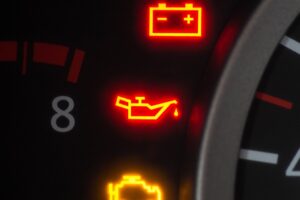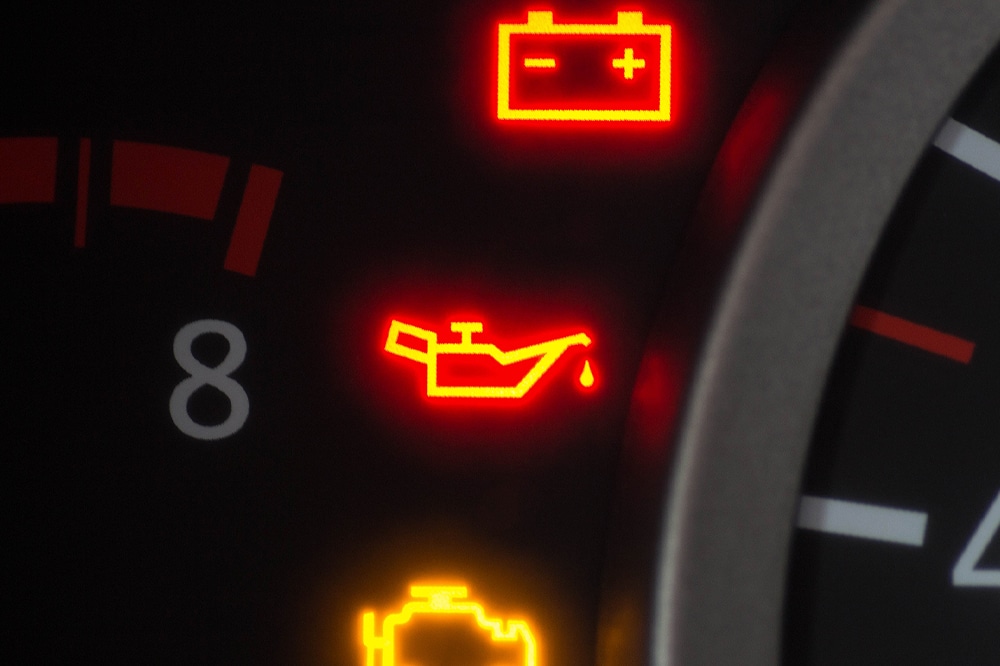Introduction:
The engine oil light is one of the most important warning indicators on a vehicle dashboard, yet many drivers tend to overlook its significance. Ignoring this light can lead to serious damage to your engine and costly repairs. In this blog post, we will discuss the importance of the engine oil light, what it means when it comes on, and what you should do when it does.

What is the Engine Oil Light?
The engine oil light is a warning indicator that is usually represented by a small oil can symbol on your dashboard. This light is designed to alert you when there is a problem with the engine oil level or pressure. When this light comes on, it means that your engine oil level is low, or there is a problem with the oil pressure, which is crucial for keeping your engine lubricated and running smoothly.
Causes of the Engine Oil Light Coming On:
There are several reasons why the engine oil light may come on. The most common causes include:
1. Low Oil Level: If your engine oil level is low, the engine oil light will come on to alert you to this issue. This can be caused by a leak, burning oil, or simply not having enough oil in your engine.
2. Oil Pressure Issue: If there is a problem with the oil pressure in your engine, the engine oil light will come on. This could be due to a faulty oil pump, a clogged oil filter, or a blockage in the oil passages.
3. Worn-out or Dirty Oil: If your engine oil is old, dirty, or contaminated, it can cause the engine oil light to come on. This is a sign that you need to change your oil and filter to ensure your engine is properly lubricated.
4. Faulty Oil Sensor: In some cases, the engine oil light may come on due to a faulty oil sensor. This sensor is responsible for detecting the oil level and pressure in your engine and sending a signal to the dashboard to alert you of any issues.

What to Do When the Engine Oil Light Comes On:
When the engine oil light comes on, it is important not to ignore it. Here are some steps you should take when this warning indicator appears:
1. Check the Oil Level: The first thing you should do when the engine oil light comes on is to check the oil level in your engine. This can be done by using the dipstick located under your hood. If the oil level is low, you should add more oil to bring it to the recommended level.
2. Check for Leaks: If your oil level is low, you should also check for any leaks that may be causing the oil to drain out of your engine. Common areas to check for leaks include the oil pan gasket, oil filter, and oil drain plug.
3. Check the Oil Pressure: If your oil level is sufficient, but the engine oil light is still on, you should check the oil pressure in your engine. This can be done using a mechanical gauge to ensure that the oil pressure is within the manufacturer’s specifications.
4. Change the Oil and Filter: If your engine oil is old, dirty, or contaminated, you should change the oil and filter to ensure proper lubrication of your engine. This should be done regularly according to the manufacturer’s recommendations.
5. Have the Oil Sensor Checked: If the engine oil light persists even after checking the oil level and pressure, you should have the oil sensor checked by a mechanic. A faulty sensor could be causing the warning light to come on when there is no actual issue with the oil.
Conclusion:
The engine oil light is a crucial warning indicator that should never be ignored. It is designed to alert you to potential problems with your engine oil level or pressure, which can lead to serious engine damage if not addressed promptly. By understanding the causes of the engine oil light coming on and knowing what to do when it does, you can ensure the longevity and performance of your vehicle. Take care of your engine, and it will take care of you.

